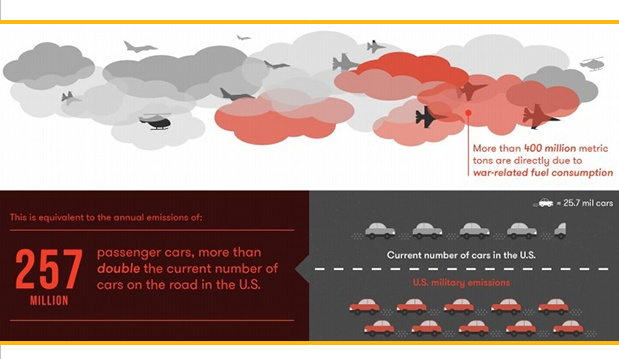Pentagon Fuel Use, Climate Change, and the Costs of War
Neta C. Crawford, Boston University
You can download this report here.
“In its quest for security, the United States spends more on the military than any other country in the world, certainly much morethan the combined military spending of its major rivals, Russia and China. Authorized at over $700 billion in Fiscal Year 2019,and again over $700 billion requested for FY2020, the Department of Defense(DOD)budget comprises more than half of all federal discretionary spendingeach year. With an armed force of more than two million people, 11 nuclear aircraft carriers, and the most advanced military aircraft, the US is more than capable of projecting power anywhere in the globe,and with “Space Command,” into outer-space. Further, the US has been continuously at war since late 2001, with the US military and State Department currently engaged in more than 80 countries in counterterror operations.
All this capacity for and use of military force requires a great deal of energy, most of it in the form of fossil fuel. As General David Petraeus said in 2011, “Energy is the lifeblood of our warfighting capabilities.” Although the Pentagon has, in recent years, increasingly emphasized what it calls energy security —energy resilience and conservation—it is still a significant consumer offossil fuel energy. Indeed, the DOD is the world’s largest institutional user of petroleum and correspondingly, the single largest producer of greenhouse gases (GHG) in the world.
This paper specifically examinesmilitary fuel usage for the US post-9/11 wars and the impact of that fuel usage on greenhouse gases emissions. The best estimate of US military greenhouse gas emissions from 2001, when the wars began with the US invasion of Afghanistan, through 2017, is that the US military has emitted 1,212 million metric tons of greenhouse gases (measured in CO2 equivalent, or CO2e). In 2017, for example, the Pentagon’s greenhouse gas emissions were greater than the greenhouse gas emissions of entire industrialized countries as Sweden or Denmark.”

